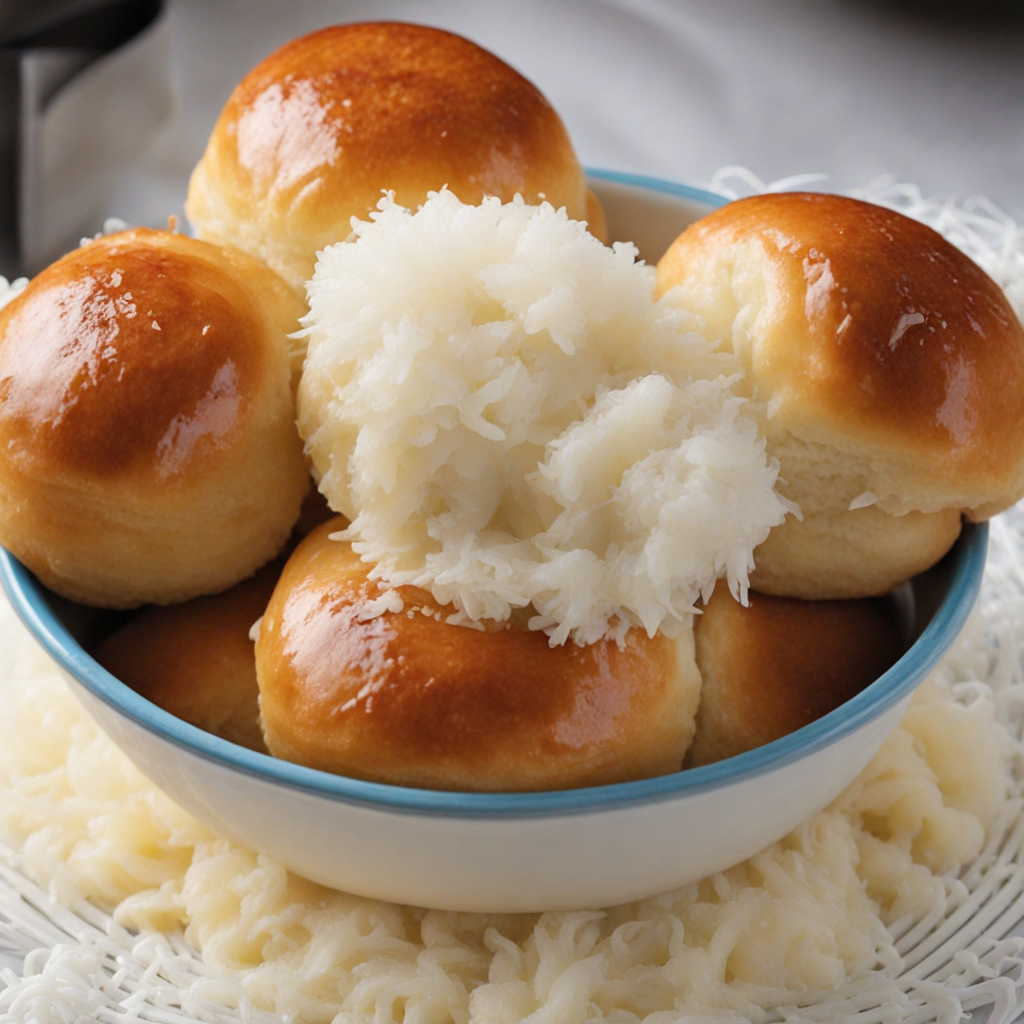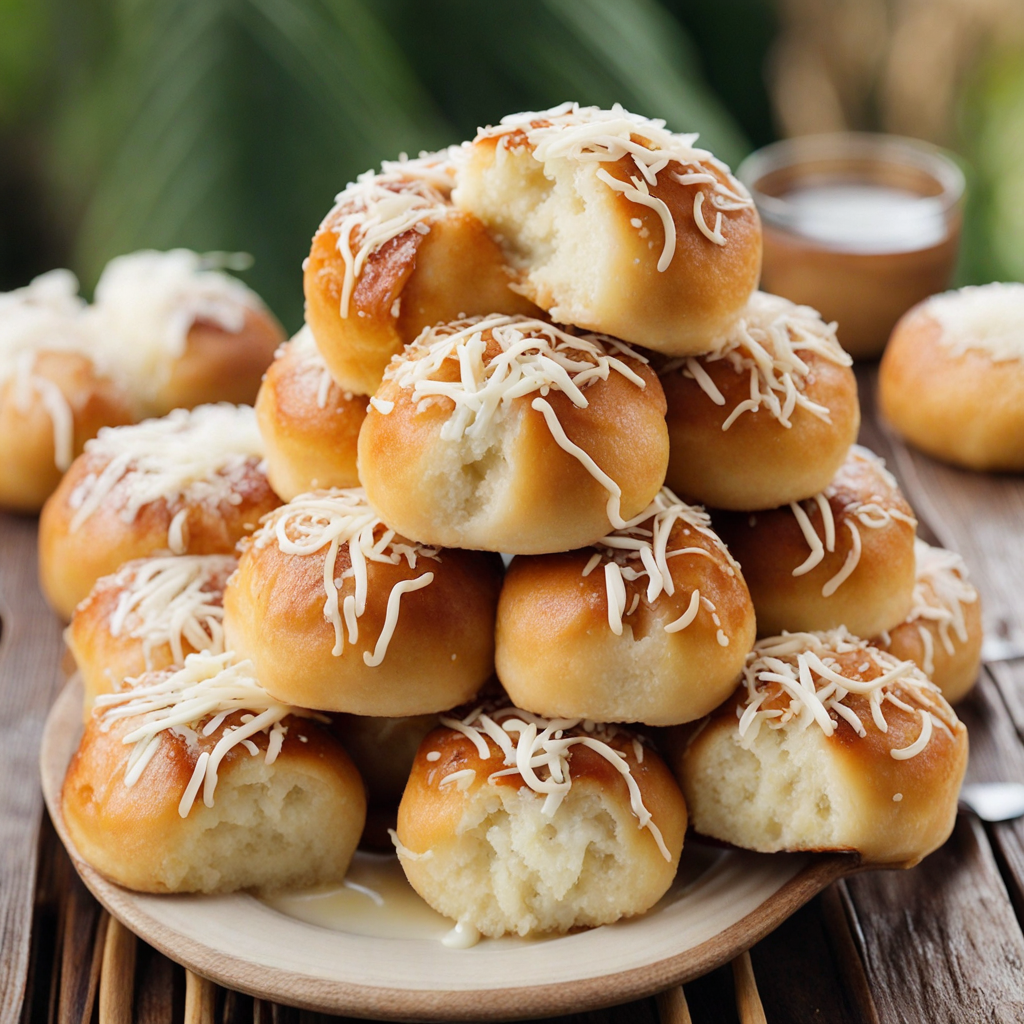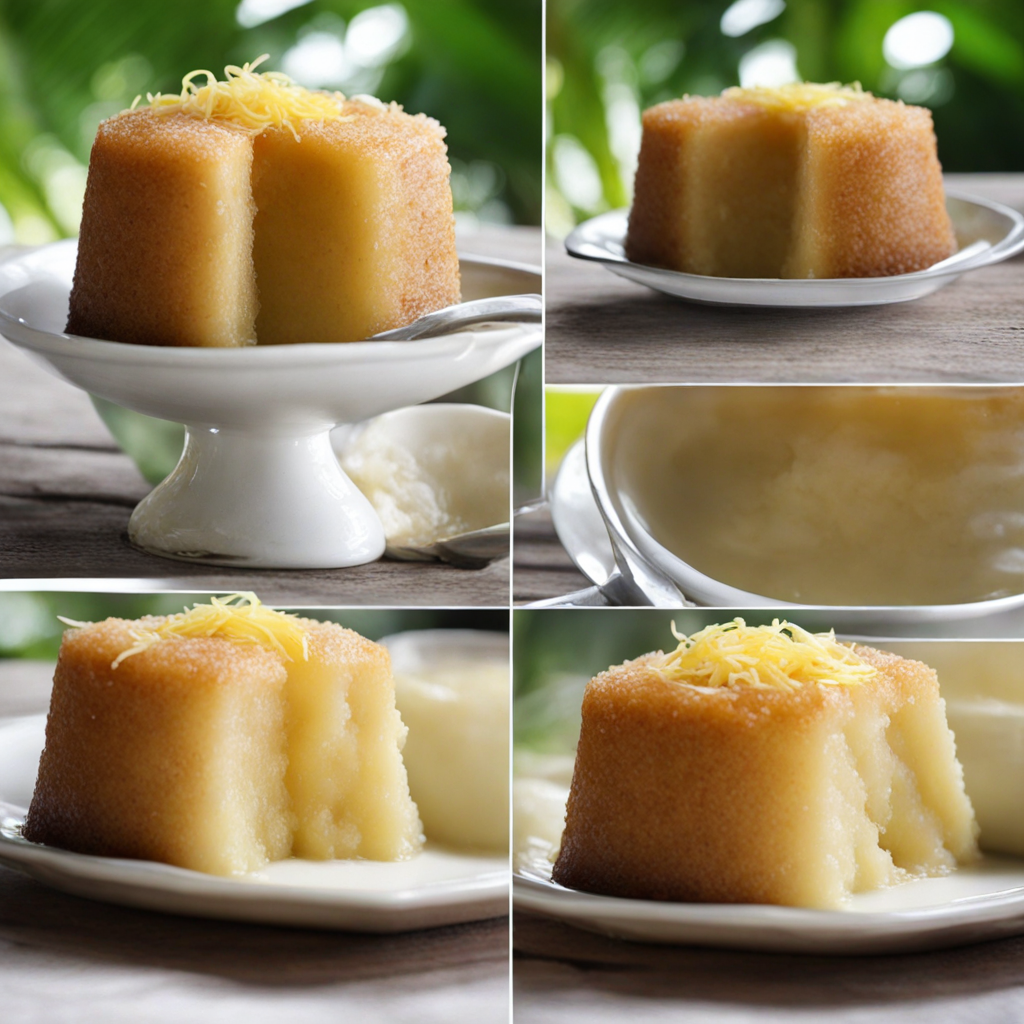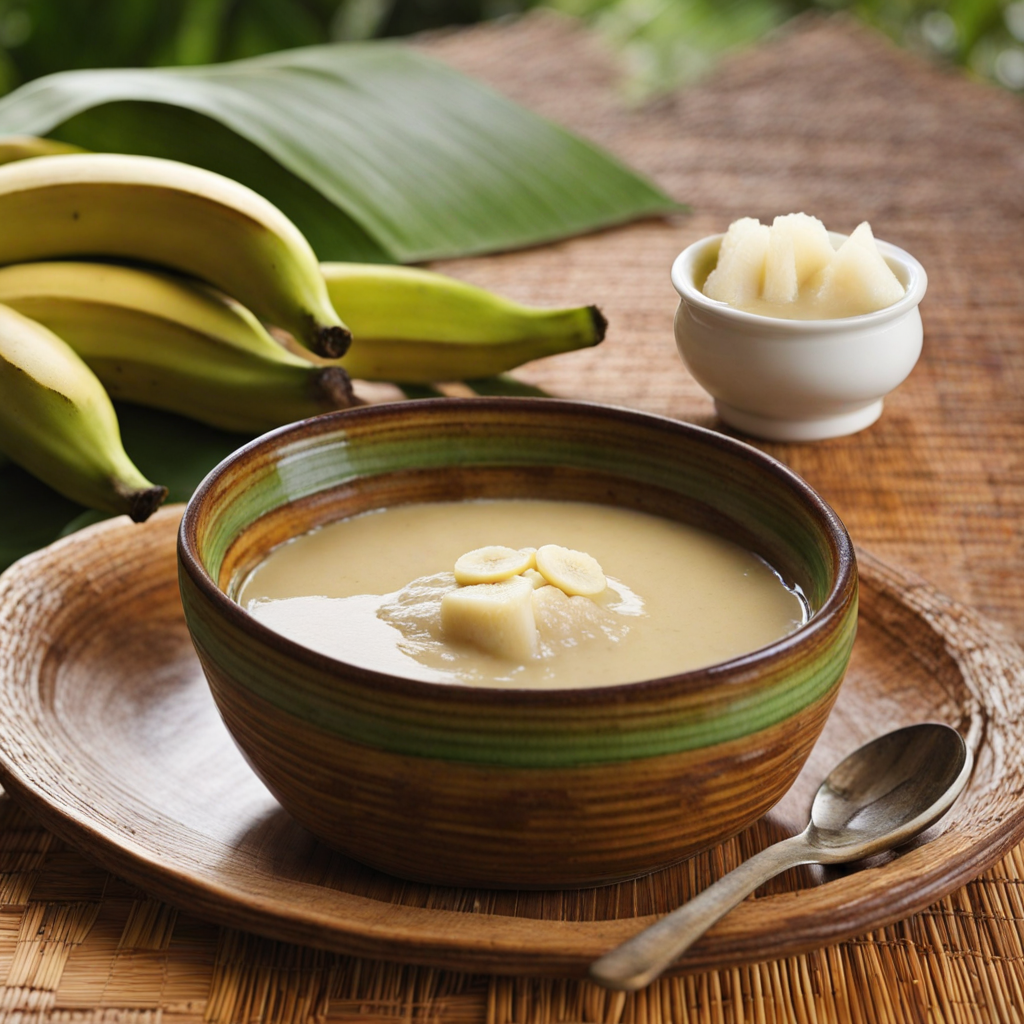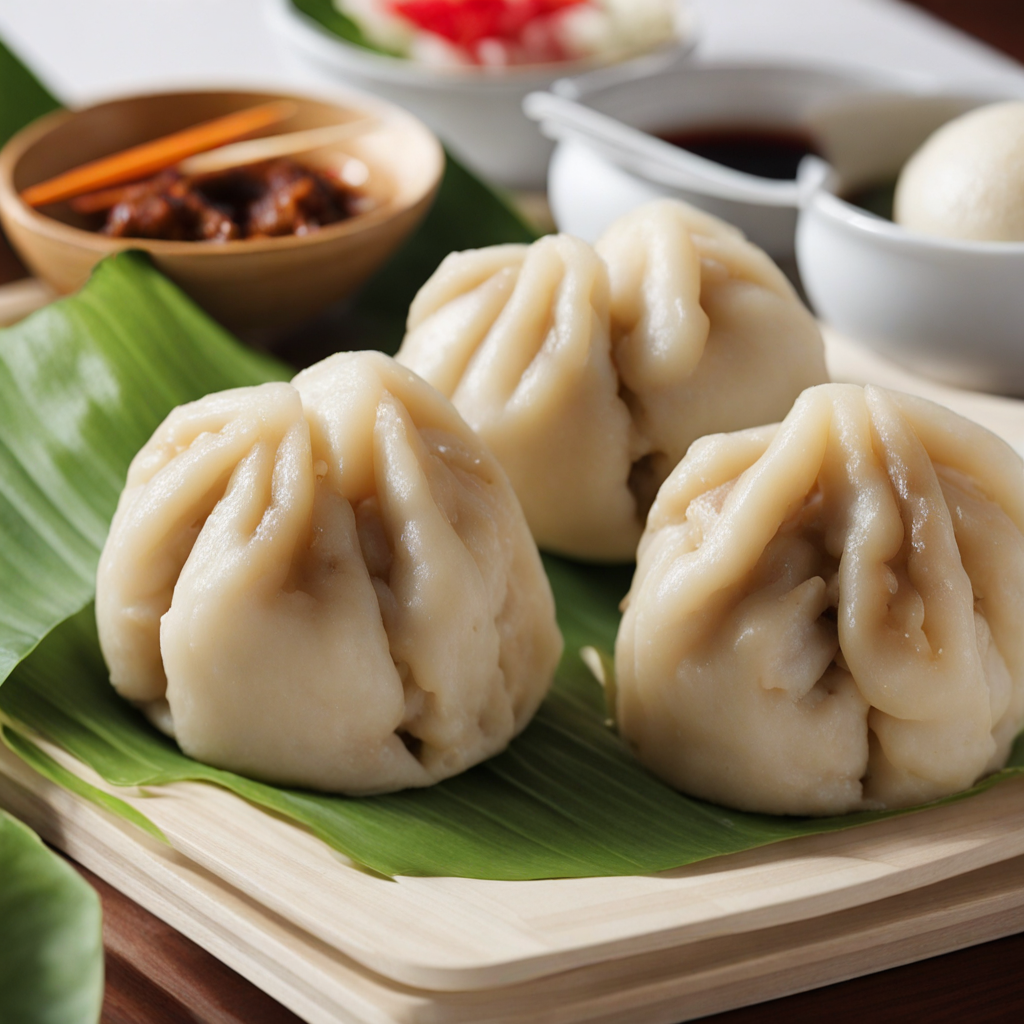Panipopo
Panipopo is a delightful Samoan treat that captivates the senses with its soft and fluffy texture. These sweet coconut buns are made from a simple dough that typically includes flour, sugar, yeast, and water, which is then allowed to rise before being shaped into small, round balls. The buns are distinctively baked in a luscious coconut milk sauce, which seeps into the dough, giving it a wonderfully moist interior and a slightly crispy exterior. The aroma of freshly baked Panipopo fills the air, enticing anyone nearby to indulge in this delectable snack or dessert. As you take your first bite of Panipopo, the sweet, creamy coconut flavor envelops your palate, bringing a taste of the tropical islands straight to your mouth. The combination of the soft bun and the rich coconut milk creates a comforting sensation, reminiscent of a warm hug. Often enjoyed warm, these buns are perfect for breakfast, a midday snack, or dessert, making them a versatile addition to any meal. The sweetness is just right, striking a perfect balance that leaves you wanting more without being overwhelmingly sugary. Traditionally, Panipopo is often served at gatherings and celebrations in Samoa, symbolizing hospitality and the sharing of good food among friends and family. They can also be enjoyed plain or with various toppings, such as a drizzle of condensed milk or a sprinkle of toasted coconut for added texture and flavor. Whether you are exploring Samoan cuisine for the first time or looking for a new dessert to impress your guests, Panipopo offers a unique taste experience that is both comforting and exotic, capturing the essence of island life in every bite.
How It Became This Dish
The Delicious History of Panipopo: A Samoan Delight #### Origins and Etymology Panipopo, a traditional Samoan dish, is a sweet and comforting treat that consists of soft bread rolls drenched in a rich coconut milk sauce. The name "panipopo" derives from the Samoan words "pani," meaning bread, and "popo," meaning coconut. This delightful concoction encapsulates the essence of Samoan cuisine, which is heavily influenced by the lush tropical climate, abundant natural resources, and deep-rooted cultural practices. The origins of panipopo can be traced back to the early Polynesian settlers who arrived in Samoa over two thousand years ago. These early inhabitants brought with them a wealth of culinary knowledge, including the cultivation of coconuts, taro, and breadfruit. Coconuts, in particular, became a staple in the Samoan diet, used for both savory and sweet dishes. The introduction of wheat flour by European missionaries in the 19th century allowed for the creation of bread, which quickly became integrated into the local cuisine. #### Cultural Significance Panipopo is not merely a dessert; it is a dish steeped in cultural significance and often associated with communal gatherings, celebrations, and family events. In Samoan culture, food plays a central role in social interactions. The preparation and sharing of meals are acts of love and hospitality, reinforcing bonds within families and communities. Traditionally, panipopo is prepared for special occasions such as birthdays, weddings, and church functions. It is often served alongside other traditional dishes, creating a feast that showcases the rich culinary heritage of Samoa. The dish's versatility allows it to be enjoyed as a breakfast item, a snack, or a dessert, making it a beloved staple in many households. The process of making panipopo is also significant. It often involves family members working together, from kneading the dough to preparing the coconut sauce. This collaborative effort fosters a sense of unity and togetherness, creating cherished memories that are passed down through generations. #### Preparation and Ingredients The basic preparation of panipopo involves creating a simple bread dough, typically made with flour, sugar, yeast, and water. The dough is allowed to rise before being shaped into rolls. However, the true magic of panipopo lies in the coconut sauce. The sauce is made from freshly squeezed coconut milk, which is mixed with sugar and sometimes flavored with vanilla or pandan leaves. Once the rolls are baked, they are placed in a baking dish and soaked in the coconut sauce, allowing them to absorb the sweet, creamy goodness. The dish is then baked again until golden brown, resulting in a delightful combination of soft, fluffy bread and rich coconut flavor. #### Evolution Over Time As Samoa has experienced cultural changes and globalization, so too has the preparation and presentation of panipopo. While traditional recipes remain popular, modern variations have emerged, incorporating different ingredients or flavors to cater to evolving tastes. For instance, some versions may include chocolate, fruit, or nuts, reflecting the influence of international cuisine. The rise of tourism in Samoa has also introduced panipopo to a broader audience. Visitors to the islands often seek out local delicacies, and panipopo has become a culinary ambassador for Samoan culture. Restaurants and cafes now serve panipopo, sometimes pairing it with contemporary dishes or presenting it in innovative ways that respect traditional roots while embracing modern culinary trends. Moreover, the accessibility of ingredients has changed the way panipopo is made. With the availability of canned coconut milk and pre-packaged bread products, many Samoans, especially those living abroad, have adapted their recipes for convenience. Despite these changes, the essence of panipopo remains intact, with the dish still evoking memories of home, family, and cultural heritage. #### Panipopo in the Global Context In recent years, the global food landscape has seen a growing interest in Polynesian cuisine, with dishes like panipopo gaining recognition beyond the shores of Samoa. Food blogs, social media, and cooking shows have played a crucial role in bringing awareness to this delightful dessert, inspiring home cooks around the world to recreate it. The dish has also found its way into fusion cuisine, where chefs experiment with different flavor profiles. Panipopo-inspired desserts may appear in trendy cafes or at culinary festivals, showcasing the adaptability of traditional recipes in a modern context. This cross-pollination of culinary ideas highlights the evolving nature of food culture, where heritage and innovation can coexist harmoniously. #### Conclusion Panipopo is more than just a sweet treat; it is a symbol of Samoan identity, culture, and community. Its rich history reflects the journey of the Samoan people, from their ancestral roots to the contemporary world. As it continues to evolve, panipopo remains a cherished dish that connects generations, celebrates shared experiences, and offers a taste of the unique flavors of Samoa. Whether enjoyed during a family gathering, a cultural celebration, or as a comforting snack, panipopo is a reminder of the beauty of culinary traditions and the importance of preserving and sharing them. As the world becomes increasingly interconnected, dishes like panipopo serve as delicious bridges between cultures, allowing people to savor the stories and heritage of others through food.
You may like
Discover local flavors from Samoa


